Wild Elderberry – What does an elderberry plant look like?
This post may contain affiliate links. Read my full disclosure here.
Before we had our own elderberry patch, I went foraging for wild elderberries with friends. We had a blast – and filled the trunk of the car with berries! For those interested in foraging wild elderberries, we’re sharing key identification tips and look-alikes to avoid.
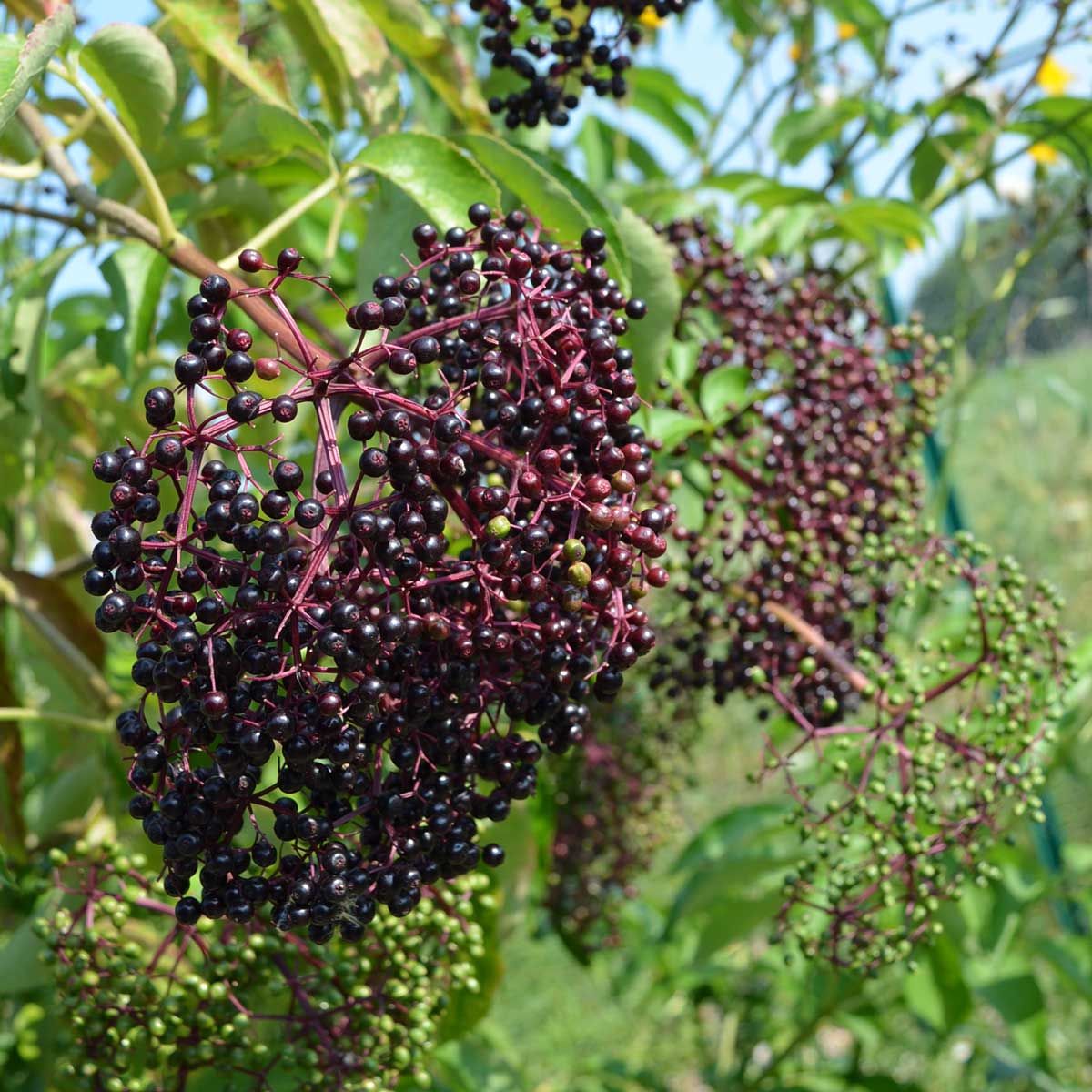
Where to Find Wild Elderberries
The two most commonly harvested wild elderberry species are:
Sambucus canadensis – American Black Elderberry – is native to North America and parts of South America. This plant is also known as Sambucus nigra ssp. Canadensis.
Black elder, Sambucus nigra, reigns in Europe, northwest Africa, and southwest Asia.
Elderberry bushes like moist, well drained soil. You’ll find them in ditches, along the edges of wet woodlands, near lakes and rivers, and other damp ground. The tolerate full and light shade, but produce more fruit in full sun.
If you look closely at the photo below, you can see dark blobs in the shrubs. In our area, the fruits ripen in September.
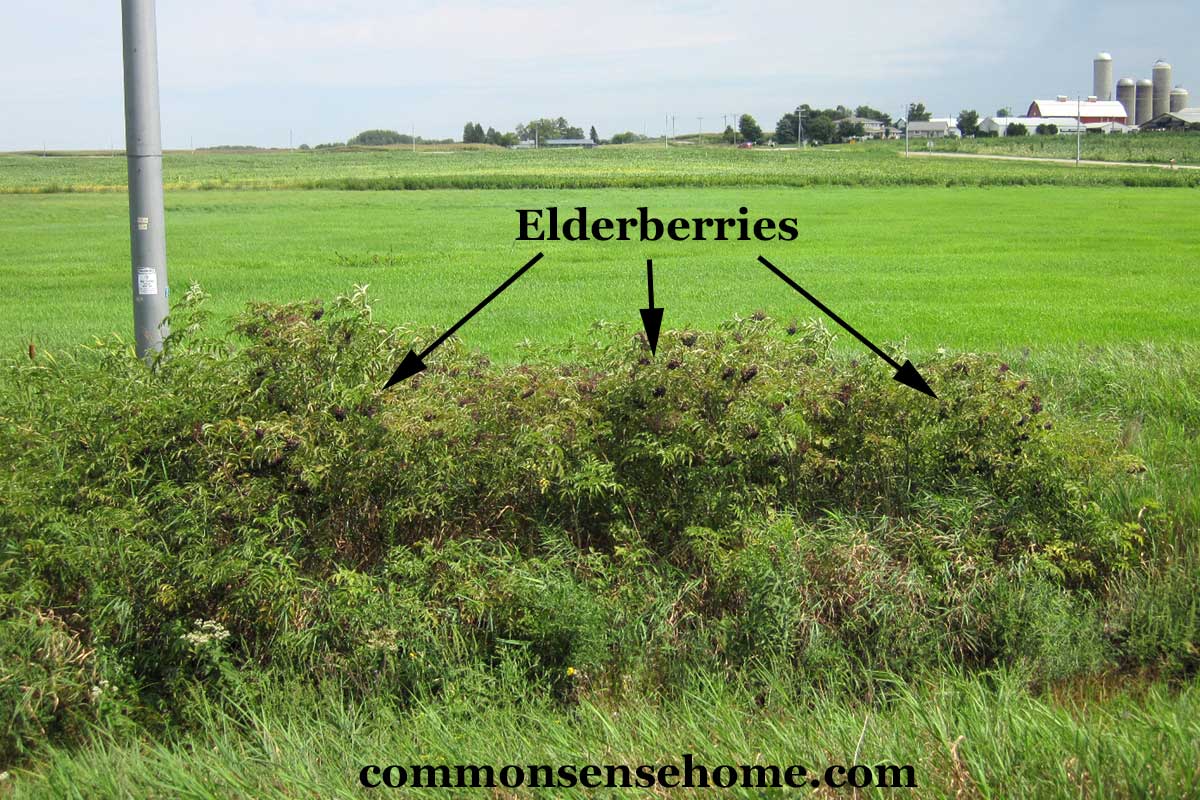
We went foraging for elderberries along country roads here in northeast Wisconsin. My friends had scouted out the area in previous years, so they knew where to start looking. The easiest features to spot on wild elderberries are the blossoms in late spring/early summer, and the clumps of berries in fall.
What does an elderberry plant look like?
The main features to look for when identifying elderberry are:
- Large shrub or small tree
- Pinnate leaves
- White flower clusters
- Purplish black berry clusters
- Stems have soft, white pith in the center
Growth Habit – Large Shrub or Small Tree
Wild elderberry typically grows between 5 to 12 feet tall, depending on the species and growing conditions. Its shape is bushy, with multiple stems that arise from the base, creating a sprawling, dense appearance.
Over time, some elderberry species can resemble small trees, especially when they are left to grow without pruning. Sambucus nigra plants will reach 20 feet tall, but most wild American plants are shorter.
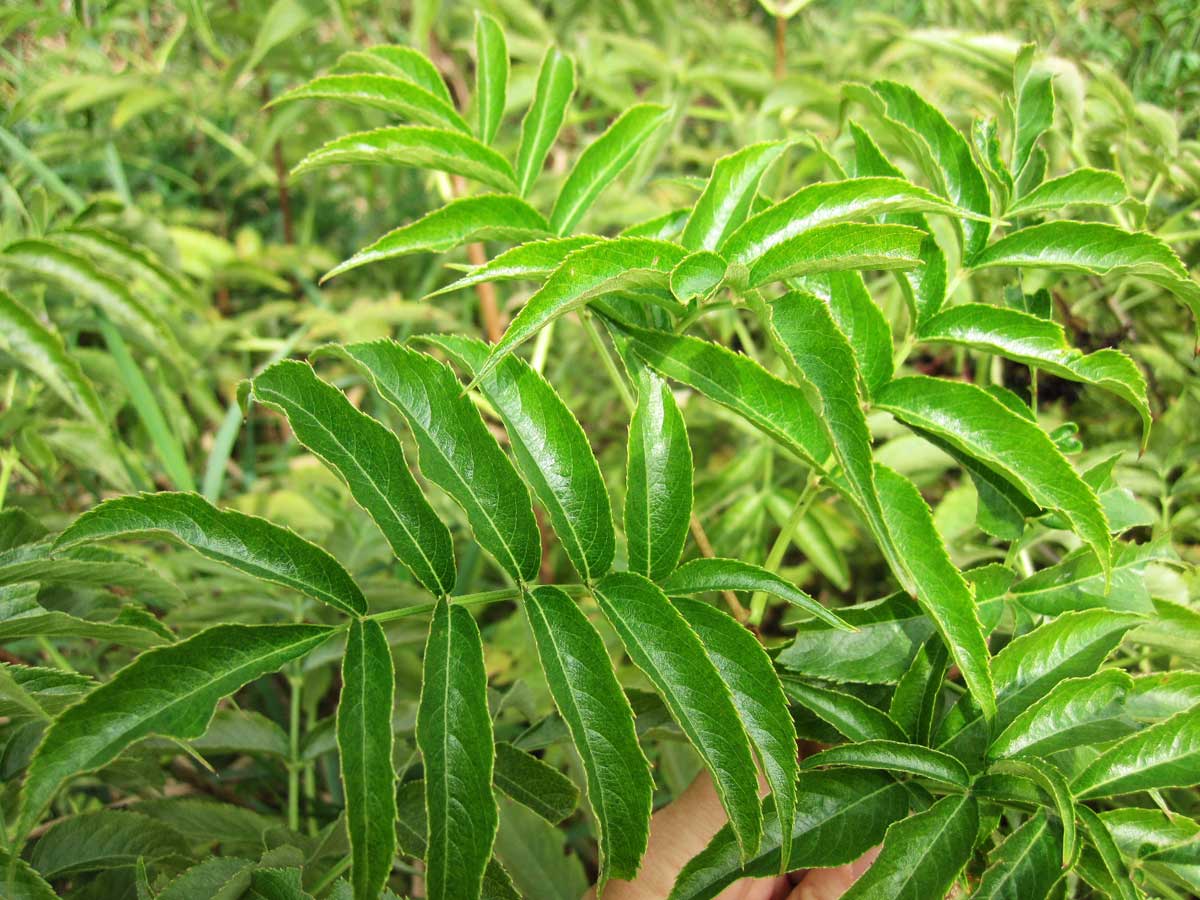
Leaves: Pinnately Compound
One of the easiest ways to identify a wild elderberry plant is by its leaves. The leaves are pinnately compound, meaning they consist of a central stem with multiple leaflets growing in pairs along it. Each leaf typically has 5 to 11 leaflets, with serrated (toothed) edges.
The leaflets are arranged oppositely, meaning they grow in pairs on opposite sides of the stem. Each leaflet is 2 to 6 inches long, with an elongated, oval shape tapering to a point. They tend to have a deep green color and can feel somewhat leathery to the touch.
Would you like to save this?
As a deciduous shrub, they lose their leaves in winter, leaving clumps of bare stems. When crushed, the leaves have a musky fragrance.
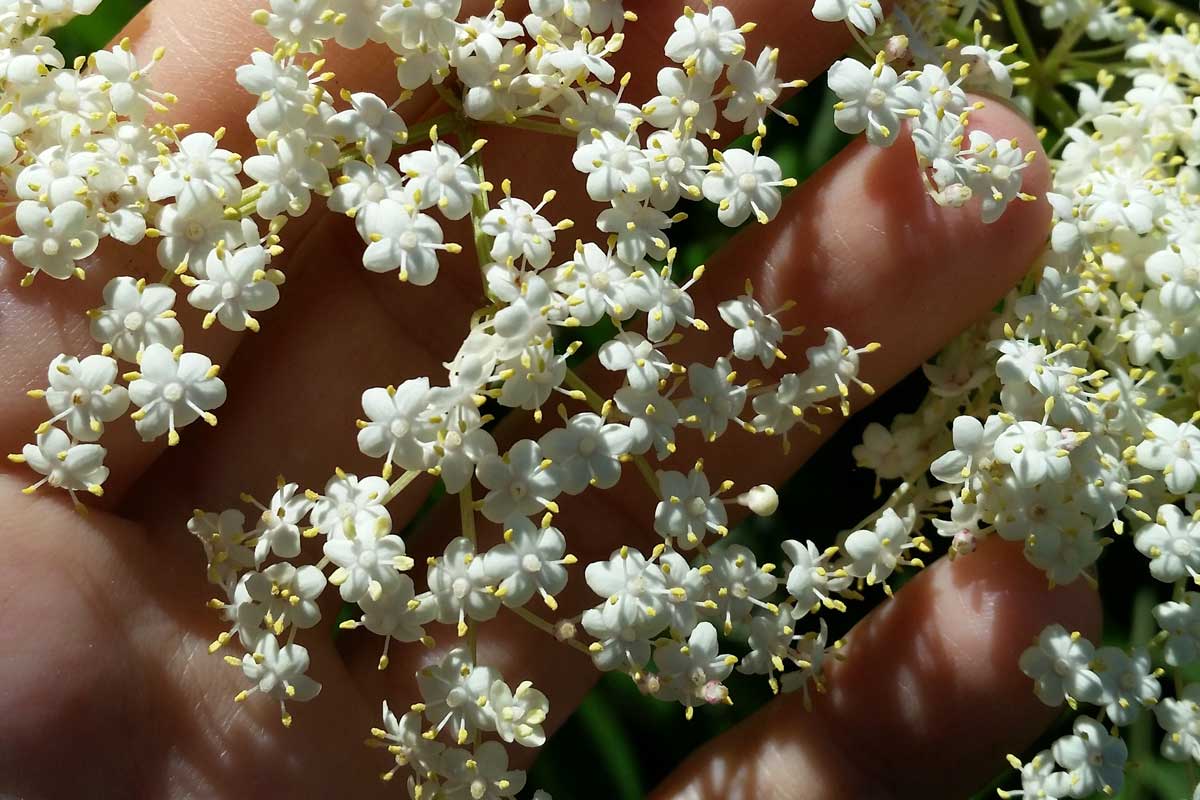
Umbrella-Shaped Clusters of Small White Flowers
In late spring or early summer, the wild elderberry becomes easy to spot when it blooms. The plant produces large, flat-topped clusters of small, creamy white flowers known as an umbel or corymb.
Each cluster can measure up to 8 to 10 inches across. The individual flowers are tiny, with five petals that form a star-like shape. The elderberry’s blossoms are not only attractive but also fragrant, drawing in bees and other pollinators. The blossoms are edible and medicinal.
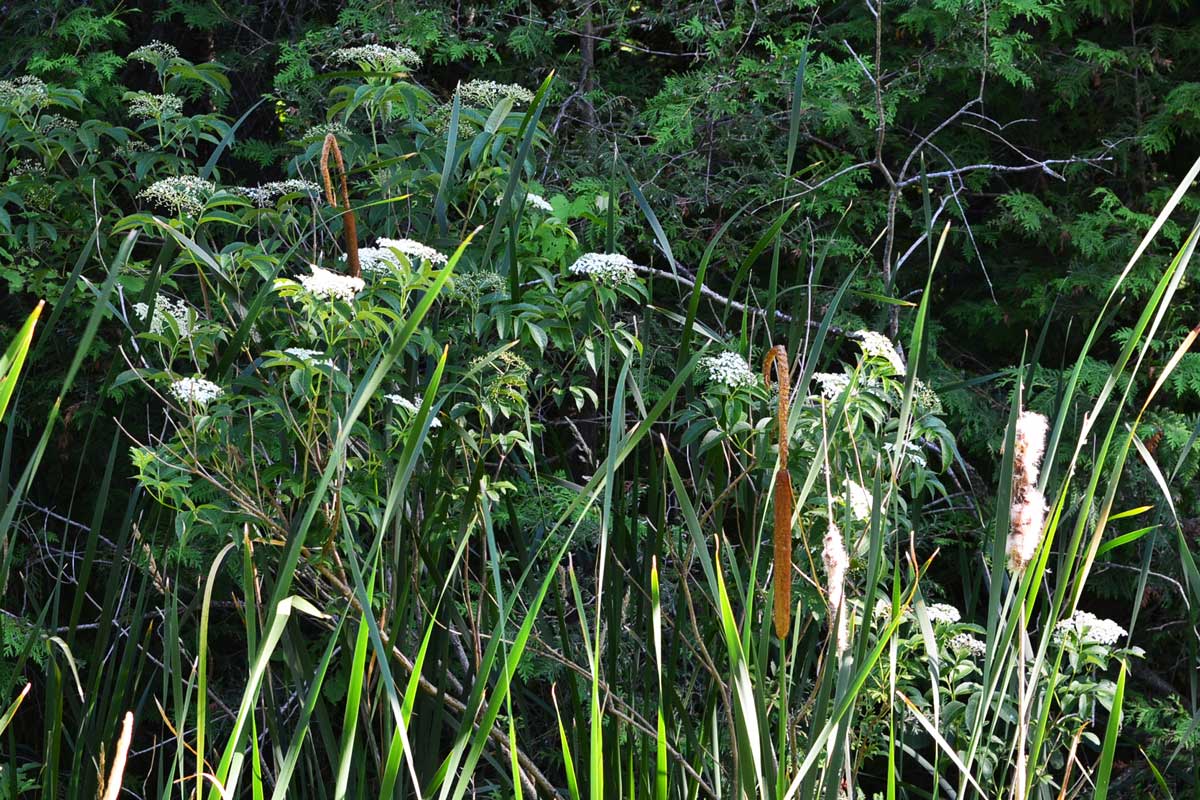
Berries: Small, Dark Purple to Black Drupes
After the flowers bloom, they give way to the elderberry’s most famous feature: the berries. These berries grow in dense clusters and change color as they ripen. They start out green, then turn red, and finally become deep purple or black. Some plants have pea sized berries, but in our area, they are a bit smaller.
The berries are round and juicy, with a slight sheen to them when fully mature. Each berry contains several small seeds inside. Elderberry berries grow in clusters that stick out above the foliage.
Raw elderberries can be toxic due to the presence of cyanogenic compounds that cause gastrointestinal issues such as nausea. Heat breaks down these compounds and makes them safe to consume. Sambucus canadensis fruit have less of these compounds, so most people can tolerate them raw.
Stems: Hollow and Spongy
The stems of wild elderberry plants are another distinctive feature. The young stems are typically green, becoming woody as they age. Elderberry stems are hollow and filled with a soft pith.
This hollow core can sometimes be seen if the stem is broken. Older stems often develop a gray or brown bark, which can be furrowed or rough.
Look-alikes
Some people confuse wild elderberry with water hemlock, inkberry, or pokeberry. If you look closely, these plants are quite different. Always make sure you have a positive identification before using a wild plant.
Using your Berries
Elderberries are an old school remedy that’s seeing a revival in recent years. We always keep some on hand for cold and flu season to make elderberry syrup and gummies. They also make a memorable wine, and of course jam, jelly, and pie.
These are some of our favorites:
- Elderberry syrup with fresh or dried berries
- Easy Elderberry Gummy Recipe
- How to Make Elderberry Wine
- Elderberry Jelly – Low Sugar and Traditional Recipes
- Elderberry jam – with or without added pectin

This article is written by Laurie Neverman. Laurie was raised on a small dairy farm in northwest Wisconsin, where she gathered wildflowers from the woods and pastures. She and her family now live in northeast Wisconsin, where they combine intentional plantings and semi-wild areas. Every season is a new opportunity to learn more about working with wild plants.

